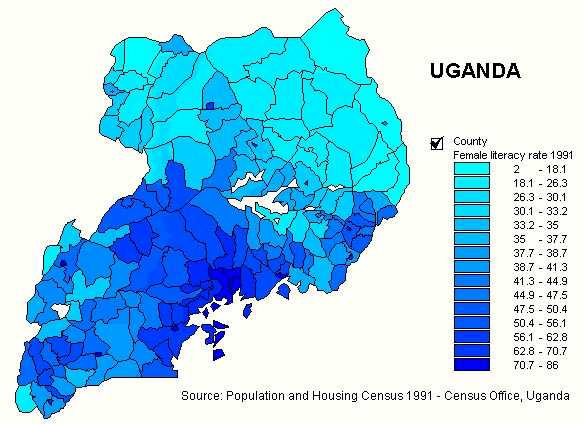| Demographics |
 |
| Uganda is among developing countries with the highest illiteracy rate in Africa. Uganda Demographics represent a trend whereby the illiteracy rate increases as one moves from the city center to the rural area. The same is true of poverty levels. According to the 1991 population and housing census, 35% of the estimated 22 million Ugandans cannot read and write. Women account for 75 % of the illiterates. Women are at a higher disadvantage because most Ugandan communities have always denied the women equal access to education opportunities. The current Uganda's data indicates that: Men Women Overall Population: 12,007,753 11,977,959 23,985,712 Life Expectancy 42.59 years 44.17 years 43.37 years Literacy Rate (1995 est.) 73.7% 50.2% 61.8% Today, women account for 77% of the current student population in adult literacy classes. There are several factors responsible for the imbalance between men and women literacy rate. - the majority of parents especially in poor families do not consider women's education to be as important as men's education. Culturally, with bride price being a major souce of income, girls have to be married off as soon as possible, so the earlier they are out of school the better. - girls have always been a vulnerable group. Most families do not offer girls a second chance after they fall victims to teen pregnancy. |
| Detailed Analytical Breakdown of the Female Literacy Rate in by County. |